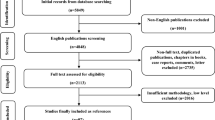Abstract
The relationship between peripapillary duodenal diverticulum and benign biliary tract disease was studied. Peripapillary duodenal diverticulum could be classified pathophysiologically into three types. Type I represents the disease not directly affecting the biliary tract. Type II shows the elevation of bile duct pressure directly caused by intraduodenal pressure loading. Type III includes patients in whom the diverticulum is small and is prone to cause papillitis or mechanical stimulation. This, then, may lead to organic changes in Oddi's sphincter and possibly to biliary tract disorders. In our patients, many cases of peripapillary duodenal diverticulum were associated with calcium bilirubinate stones, indicating that a peripapillary duodenal diverticulum is likely to lead to bile stagnation and ascending infection of the biliary tract and thus cause formation of calcium bilirubinate stones. Based on findings in this study, we want to emphasize that Type II peripapillary duodenal diverticulum should be surgically treated.
Similar content being viewed by others
References
Lemmel G. Die Klinische Bedeutung des Duodenaldivertikel. Arch Verd-Krht 1934; 56: 59–70.
Suzuki N, Takahashi W, Uematsu I, Sato T. Evaluation of biliary pressure by perfusion method and its significance. Tohoku J exp Med 1983; 139: 121–131.
Wilbur BC, Reimer GW, Cressman RC. Duodenal diverticula in common duct desease. Amer J Surg 1956; 92: 318–324.
Pimparker BD. Diverticulosis of the small intestine. In: Bockus HL, ed. Gastroenterology Vol. II. Philadelphia & London: WB Saunders, 1976; 437–458.
Eggert A, Teichmann W, Wittmann DH. The pathological implication of duodenal diverticular. Surg Gynecol Obstet 1982; 154: 62–64.
Landor JH, Fulkerson CC. Duodenal diverticula; relationship to biliary tract disease. Arch Surg 1966; 92: 182–188.
Culver GJ, Pirson HS. The roentgenographic findings in 3 cases of termination of the common bile duct in duodenal diverticula. Amer J Roentgenol 1976; 96: 370–374.
McScherry CK, Gleen F. Biliary tract obstruction and duodenal diverticula. Surg Gynecol Obstet 1970; 130: 829–836.
Costopoulos LB, Miller JDR. Insertion of the common bile duct and pancreatic duct into duodenal diverticula. Radiology 1967; 89: 256–262.
Lotveit T, Osnes M, Larsen S. Recurrent biliary calculi; duodenal diverticula as a predisposing factor. Ann Surg 1982; 196: 30–32.
Author information
Authors and Affiliations
Rights and permissions
About this article
Cite this article
Suzuki, N., Yamauchi, H., Takahashi, W. et al. Peripapillary duodenal diverticulum and biliary tract diseases. The Japanese Journal of Surgery 14, 479–485 (1984). https://doi.org/10.1007/BF02469790
Received:
Published:
Issue Date:
DOI: https://doi.org/10.1007/BF02469790




